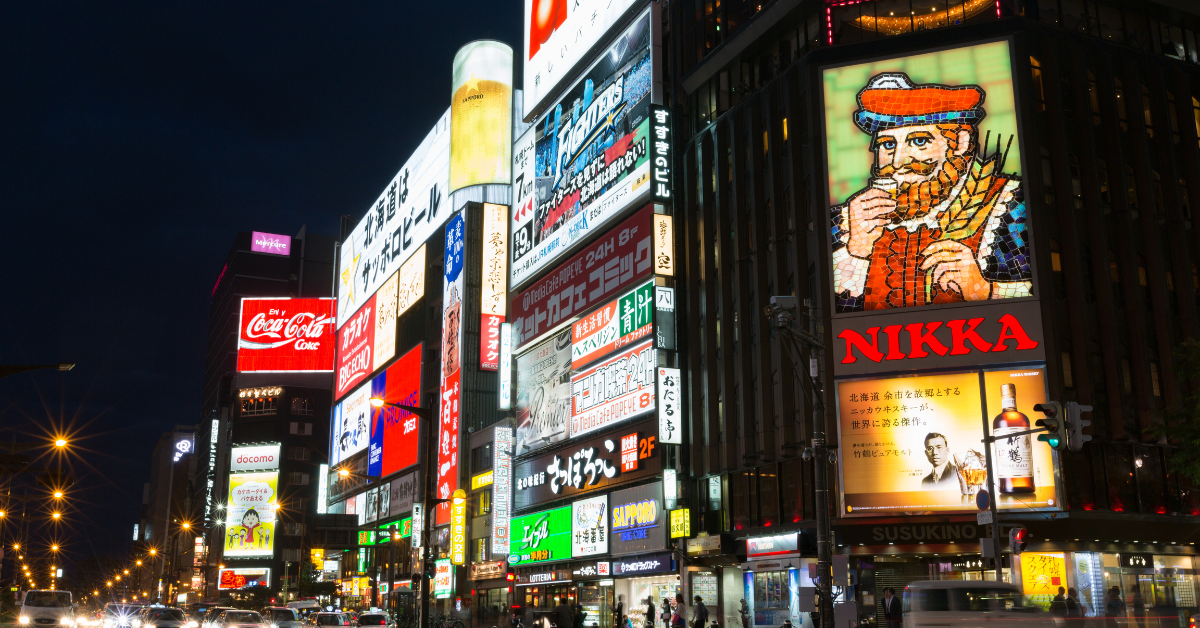Hokkaido is one of Japan’s most beloved travel destinations. Its ever-changing natural beauty across seasons, regional food specialties, and rich array of experiences continue to captivate travelers year after year.
Why Hokkaido Is So Highly Rated as a Tourist Spot
Compared to other regions in Japan, Hokkaido boasts an extensive and diverse natural environment. In spring, visitors can enjoy the contrast of fresh greenery and lingering snow. In summer, it serves as a cool escape from Japan’s heat. Autumn brings colorful foliage and harvest festivals, while winter offers some of the world’s best powder snow, attracting skiers and snowboarders from around the globe.
Seasonal Attractions in Hokkaido
| Season | Main Features | Key Destinations |
|---|---|---|
| Spring | Cherry blossoms, tulips, wild vegetables | Matsumae, Shizunai, Kamiyubetsu |
| Summer | Lavender fields, hiking, beaches | Furano, Shiretoko, Shakotan |
| Autumn | Fall foliage, hot springs, harvest events | Sounkyo, Jozankei, Lake Toya |
| Winter | Skiing, drift ice, snow festivals | Niseko, Abashiri, Sapporo |
These natural resources are not just for viewing; many become the focus of outdoor activities, further boosting the region’s appeal.
Culinary Culture Drives Tourist Appeal
Hokkaido is a food paradise, known for its fresh seafood, dairy products, vegetables, and meats. The region’s cuisine is a key motivator for many tourists. According to national travel surveys, many people choose Hokkaido specifically for its food.
Local Cuisine by Region in Hokkaido
| Region | Famous Dishes |
|---|---|
| Sapporo | Miso ramen, jingisukan (lamb BBQ), soup curry |
| Otaru | Seafood bowls, sushi, herring dishes |
| Hakodate | Squid sashimi, seafood rice bowls, salt ramen |
| Obihiro | Pork rice bowls, Tokachi sweets |
| Asahikawa | Soy sauce ramen, grilled offal |
| Furano | Wine, cheese, omelet curry |
Each area has developed a unique food culture that enhances the overall travel experience. Local ingredients and recipes strengthen the link between regional identity and cuisine.
High Ratings and Strong Repeat Travel Among Japanese Tourists
Hokkaido enjoys exceptional satisfaction ratings among Japanese travelers. Repeat visits are especially common, driven by high quality across nature, food, hospitality, and infrastructure.
Satisfaction Ratings by Destination (Japan Tourism Agency)
| Destination | Overall Satisfaction | Intention to Revisit | Facility Satisfaction |
|---|---|---|---|
| Hokkaido | 92% | 89% | 90% |
| Kyoto | 87% | 82% | 88% |
| Okinawa | 85% | 81% | 85% |
| Tokyo | 83% | 78% | 86% |
Hokkaido’s consistent high performance across these metrics confirms its well-rounded strength as a travel destination.
Seasonal Events Enhance Its Tourist Reputation
Events held throughout the year allow visitors to experience local culture and history more deeply. These events are not only enjoyable but also serve as effective tourism drivers.
Major Events and Seasons in Hokkaido
| Event Name | Location | Time | Highlights |
|---|---|---|---|
| Sapporo Snow Festival | Sapporo | February | Giant snow sculptures, lights |
| Furano Lavender Festival | Furano | July | Lavender fields, food stalls |
| Otaru Snow Light Path | Otaru | February | Streets lit by candle lanterns |
| Hakodate Christmas Fantasy | Hakodate | December | Tree lighting, music events |
These seasonal events are heavily promoted in media and travel publications, helping attract new demographics of travelers year-round.
Regional Gaps and Future Tourism Development
Despite its success, tourism development in Hokkaido is not evenly distributed. Cities like Sapporo, Hakodate, and Niseko are major hubs, while northern and inland areas are less visited.
Visitor Numbers and Attractions by Area (Estimates)
| Area | Main Attractions | Approx. Annual Visitors |
|---|---|---|
| Sapporo | Urban tourism, Snow Festival | 14 million |
| Hakodate | Night views, historical buildings, markets | 5 million |
| Furano/Biei | Lavender fields, scenic hills | 3 million |
| Wakkanai/Soya | Northernmost landmarks, Rishiri/Rebun | 700,000 |
| Kushiro/Nemuro | Wetlands, wildlife, seafood | 800,000 |
Bridging these gaps requires improved infrastructure, regional branding, and multilingual support. Eco-tourism and themed routes are being developed to draw more visitors to less-known areas.
Conclusion
Hokkaido stands out as one of Japan’s most comprehensive and satisfying travel destinations. It seamlessly blends nature, food, festivals, and infrastructure to create a memorable experience. Its strong appeal is reflected in the high satisfaction and revisit rates among domestic travelers.
Moving forward, the challenge lies in maintaining this quality while ensuring sustainable tourism practices. By addressing regional disparities and promoting responsible travel, Hokkaido can continue to evolve as a globally admired destination.






